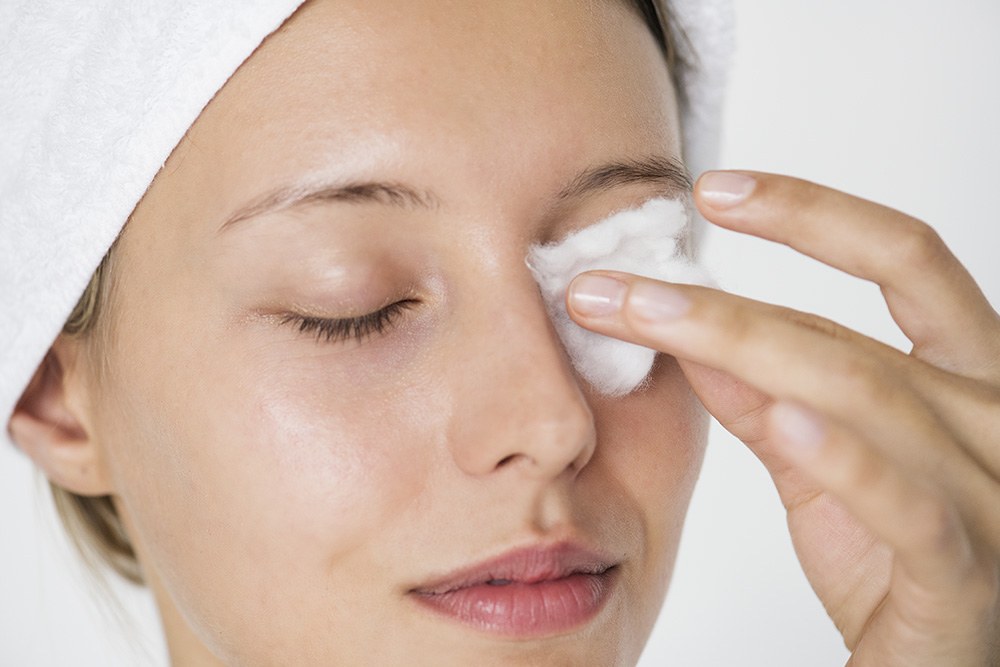What is the maximum temperature that the human body can withstand?

Oily skin can be a frustrating concern, leading to shine, enlarged pores, and even breakouts. While it may seem challenging to control, several effective strategies can help manage oily skin and achieve a clearer, more balanced complexion. Now, let's explore the top 8 strategies for keeping oily skin in check.
1. Cleanse Regularly
Cleansing is the foundation of any skincare routine, and it's especially important for those with oily skin. Use a gentle, oil-free cleanser twice a day to remove excess oil, dirt, and impurities without stripping your skin of its natural moisture [1]. Look for cleansers containing salicylic acid or benzoyl peroxide, which can help unclog pores and prevent breakouts.
2. Use a Toner
After cleansing, apply a toner to help balance your skin's pH and remove any remaining traces of oil or debris. Opt for a toner containing ingredients like witch hazel, which can help tighten pores and regulate oil production [2]. Avoid toners with alcohol, as these can dry and irritate the skin.
3. Exfoliate Weekly
Exfoliating once or twice a week can help remove dead skin cells and unclog pores, which can contribute to oiliness and breakouts. Use a gentle chemical exfoliant, like salicylic acid or glycolic acid, to slough away dead skin cells without causing irritation [3]. Be careful not to over-exfoliate, as this can lead to dryness and increased oil production.
4. Moisturize with Oil-Free Products
Even oily skin needs moisture, but it's essential to choose the right type of moisturizer. Look for oil-free, non-comedogenic products that won't clog your pores or contribute to shine. Gel-based moisturizers are often a good choice for oily skin, providing lightweight hydration without a greasy feel [4].
5. Use a Clay Mask
Clay masks are a great way to absorb excess oil and deep-clean your pores. Apply a clay mask once or twice a week, focusing on your T-zone (forehead, nose, and chin) where oil tends to accumulate. Bentonite and kaolin clay are popular for oily skin, as they can help draw out impurities and reduce shine [5].
6. Don't Skip Sunscreen
Sun protection is crucial for all skin types, but those with oily skin may hesitate to use sunscreen for fear of added greasiness. Choose a lightweight, oil-free sunscreen with an SPF of at least 30, and apply it daily to protect your skin from damaging UV rays [6]. Many sunscreens now have matte finishes that help control shine throughout the day.
7. Blot Away Excess Oil
During the day, use blotting papers to remove excess oil without disturbing your makeup or clogging your pores. Gently press the blotting paper against your skin, focusing on your T-zone or any other areas that tend to get shiny. This can help keep your skin looking matte and fresh throughout the day [7].
8. Manage Stress and Maintain a Healthy Lifestyle
Stress and unhealthy habits can exacerbate oily skin, so taking a holistic approach to managing your complexion is essential. Practice stress-reducing techniques like meditation or deep breathing exercises, and aim to get enough sleep each night. Maintain a healthy diet rich in fruits, vegetables, and whole grains, and limit your intake of sugary and greasy foods that can contribute to oiliness [8].
By incorporating these eight strategies into your skincare routine and lifestyle, you can effectively manage oily skin and achieve a clearer, more balanced complexion. Remember to be patient and consistent with your efforts, as it may take time to see the full effects of these changes. If you continue to struggle with oily skin or experience severe breakouts, consult with a dermatologist who can provide personalized advice and treatment options.
References
- Del Rosso, J. Q. (2013). The Role of Skin Care as an Integral Component in the Management of Acne Vulgaris: Part 1: The Importance of Cleanser and Moisturizer Ingredients, Design, and Product Selection. The Journal of Clinical and Aesthetic Dermatology, 6(12), 19-27. https://www.ncbi.nlm.nih.gov/pmc/articles/PMC3997205/
- Thring, T. S., Hili, P., & Naughton, D. P. (2011). Antioxidant and potential anti-inflammatory activity of extracts and formulations of white tea, rose, and witch hazel on primary human dermal fibroblast cells. Journal of Inflammation, 8(1), 27. https://doi.org/10.1186/1476-9255-8-27
- Araviiskaia, E., Dréno, B., Kerob, D., Morse, A. N., Peereboom, T., Dessinioti, C., & Bouloc, A. (2019). Exfoliation in the Treatment of Acne Vulgaris: A comprehensive review. Journal of Drugs in Dermatology, 18(7), 652-658. https://pubmed.ncbi.nlm.nih.gov/31318526/
- Draelos, Z. D. (2010). Therapeutic moisturizers. Dermatologic Clinics, 28(3), 397-404. https://doi.org/10.1016/j.det.2010.03.002
- Williams, L. B., & Haydel, S. E. (2010). Evaluation of the medicinal use of clay minerals as antibacterial agents. International Geology Review, 52(7/8), 745-770. https://doi.org/10.1080/00206811003679737
- Sambandan, D. R., & Ratner, D. (2011). Sunscreens: An overview and update. Journal of the American Academy of Dermatology, 64(4), 748-758. https://doi.org/10.1016/j.jaad.2010.01.005
- Poverina, A. M. (2019). Oily Skin: A review of Treatment Options. The Journal of Clinical and Aesthetic Dermatology, 12(8), 49-52. https://www.ncbi.nlm.nih.gov/pmc/articles/PMC6725137/
- Hunter, H. J., Momen, S. E., & Kleyn, C. E. (2015). The impact of psychosocial stress on healthy skin. Clinical and Experimental Dermatology, 40(5), 540-546. https://doi.org/10.1111/ced.12582
Latest Posts
-
1
-
2
-
3
-
4
-
5





